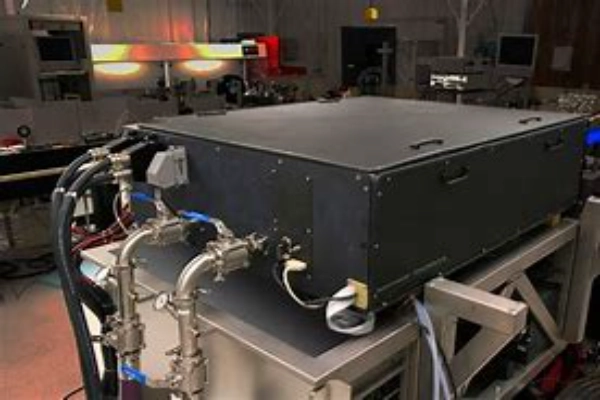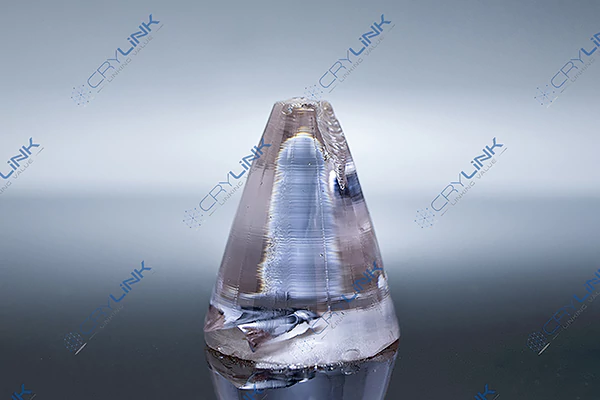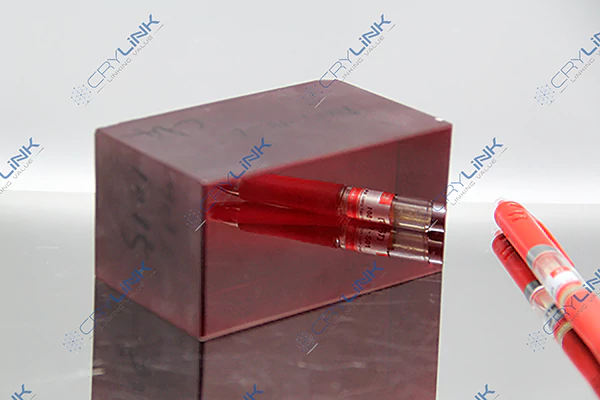Introduction
In the realm of photonics, the tunability of high-power lasers stands as a cornerstone, enabling a myriad of applications in scientific research and spectroscopy. This article delves deep into the tunability properties of high-power lasers, focusing on frequency and wavelength adjustments, and the pivotal role they play in modern-day research and applications.

Understanding Laser Tunability
The realm of lasers has seen significant advancements over the years, with one of the most notable being the development of tunable lasers. Laser tunability, at its core, is the capability to modify or alter the output frequency or wavelength of a laser. This unique feature has opened up a plethora of applications and possibilities in various scientific and industrial domains.
Diving deeper into the concept of laser tunability, it’s essential to understand that this ability is not inherent to all lasers. It is a specialized feature that arises from intricate manipulations of the lasing medium or the incorporation of external components. The lasing medium, often a gas, liquid, or solid, is the heart of the laser system. When subjected to external energy, this medium emits light. By tweaking the properties of this medium or by introducing specific external elements, the emitted light’s frequency or wavelength can be adjusted, leading to the phenomenon of laser tunability.
Frequency tuning is one of the primary aspects of laser tunability. It revolves around the modification of the laser’s output frequency. The significance of frequency tuning becomes evident when we consider its applications. For instance, in atomic and molecular spectroscopy, the ability to control the laser’s frequency with precision is paramount. Spectroscopy relies on the interaction of light with matter. By tuning the laser’s frequency, scientists can target specific atomic or molecular transitions, allowing them to study materials at a granular level. This precise control has led to groundbreaking discoveries in the fields of chemistry and physics.
On the flip side, we have wavelength tuning, which is equally crucial but serves a slightly different purpose. In essence, wavelength tuning is about changing the laser’s output wavelength. The importance of this feature becomes evident in sectors like medical imaging and telecommunications. In medical imaging, for example, different tissues and structures within the body respond differently to various wavelengths of light. By tuning the laser to the appropriate wavelength, medical professionals can obtain clearer and more detailed images of the internal structures of the body, aiding in accurate diagnosis and treatment.
Telecommunications is another sector that benefits immensely from wavelength tuning. In modern fiber-optic communication systems, data is transmitted as light pulses. By tuning the laser’s wavelength, data can be sent on different channels, increasing the overall bandwidth and data transmission rate. This has revolutionized the way we communicate, allowing for faster internet speeds and more reliable connections.
In conclusion, laser tunability, encompassing both frequency and wavelength tuning, is a game-changer in the world of photonics. It has not only expanded the horizons of scientific research but has also paved the way for advancements in medical, industrial, and communication sectors. As technology continues to evolve, the potential applications and implications of tunable lasers are bound to grow, marking a promising trajectory for the future of laser technology.

Crystals in High-Power Lasers
In the intricate world of laser technology, the significance of crystals cannot be understated. Serving as the backbone of many high-power lasers, these crystals are pivotal in determining the laser’s overall performance, efficiency, and tunability. Often doped with rare-earth ions, these crystals amplify the light, making it possible to achieve high-power outputs and a range of tunable frequencies and wavelengths.
Diving deeper into the subject, one can’t help but marvel at the role of rare-earth ions in these crystals. These ions, when introduced into the crystal lattice, impart unique properties that are otherwise absent in undoped crystals. The interaction between the laser light and these ions leads to the amplification of the light, resulting in a more potent laser output.
Among the myriad of crystals used in laser technology, Nd:YAG and Ti:Sapphire stand out due to their exceptional properties and widespread use. Nd:YAG, or Neodymium-doped Yttrium Aluminum Garnet, is a crystal that has carved a niche for itself in the laser industry. Its efficiency and versatility make it a preferred choice for a variety of applications, from industrial cutting and welding to medical procedures. The neodymium ions in the crystal lattice provide the necessary energy levels that facilitate the amplification of light, making it possible to achieve high-power outputs.
On the other hand, Ti:Sapphire, or Titanium-doped Sapphire, is renowned for its broad tunability range. This means that lasers employing Ti:Sapphire crystals can be tuned to emit light over a wide range of frequencies and wavelengths. This broad tunability is attributed to the titanium ions introduced into the sapphire crystal. These ions create energy levels that can be exploited to produce light of varying frequencies, making Ti:Sapphire lasers invaluable in applications that require precise control over the laser’s output, such as spectroscopy and imaging.
Beyond the types of crystals, it’s essential to understand the overarching role of crystals in laser tunability. The choice of crystal directly impacts the range of frequencies and wavelengths a laser can produce. Different crystals, due to their unique lattice structures and doping ions, offer different tunability ranges. By carefully selecting the appropriate crystal, researchers and engineers can design lasers tailored to specific applications, ensuring optimal performance and results.
Moreover, the advancements in crystal growth techniques have paved the way for the development of high-quality crystals with fewer defects and impurities. These high-quality crystals further enhance the performance of lasers, leading to more efficient and stable outputs. The ongoing research in this domain promises even better crystals in the future, which will undoubtedly push the boundaries of what’s possible with laser technology.
In conclusion, crystals are the unsung heroes of high-power lasers. Their role in amplifying light and enabling tunability is paramount. As the quest for more powerful and versatile lasers continues, the importance of crystals, with their unique properties and capabilities, will only grow. The future of laser technology is intrinsically linked with advancements in crystal research, promising a bright and shining path ahead.

Applications of Tunable High-Power Lasers
The versatility and precision of tunable high-power lasers have made them indispensable tools in a variety of fields, each harnessing their unique capabilities to drive innovation and discovery.
In the realm of scientific research, the ability to adjust the frequency and wavelength of lasers has opened up new avenues of exploration. Researchers can now delve deeper into the mysteries of materials, studying their reactions and interactions at different light frequencies. This has led to a better understanding of material properties, behaviors, and the discovery of new phenomena that were previously hidden from view. The precision offered by tunable lasers allows scientists to target specific atomic or molecular transitions, leading to more accurate and detailed observations.
Spectroscopy, a technique that studies the interaction between matter and electromagnetic radiation, greatly benefits from tunable lasers. By adjusting the laser’s output, scientists can identify various elements and compounds. Each element or compound interacts with light in a unique way, producing a distinct spectral signature. Tunable lasers, with their ability to produce a wide range of frequencies, can detect these signatures, enabling accurate identification and analysis. This has applications in fields ranging from chemistry and biology to astronomy and environmental science.

The medical field, always at the forefront of technological adoption, has embraced tunable lasers, especially in the domain of medical imaging. The human body is a complex structure, with different tissues and organs having varying responses to light. Tunable lasers, with their ability to change output wavelengths, can produce images of unparalleled clarity and detail. This has revolutionized diagnostic procedures, allowing for early detection of diseases and more effective treatments.
Lastly, the world of telecommunications, which connects us all, relies heavily on tunable lasers. As data traffic continues to grow exponentially, the need for efficient and interference-free data transmission becomes paramount. Tunable lasers, with their precise control over light output, can transmit data over vast distances without any loss or interference. This ensures faster internet speeds, clearer voice calls, and uninterrupted streaming, enhancing our connected experience.
In essence, tunable high-power lasers, with their adaptability and precision, are shaping the future across various sectors, driving advancements and enriching our understanding of the world around us.

Conclusion
The tunability of high-power lasers, encompassing frequency and wavelength adjustments, stands as a testament to the advancements in photonics. With their ability to be finely tuned, these lasers are paving the way for breakthroughs in various fields, from scientific research to medical imaging. As we continue to harness the power and versatility of tunable lasers, the horizon of possibilities only broadens.
FAQs
- What is the significance of crystals in high-power lasers?
- Crystals are pivotal in determining the tunability of a laser. They amplify the light and enable the desired frequency or wavelength output.
- How does frequency tuning differ from wavelength tuning?
- Frequency tuning involves adjusting the output frequency, while wavelength tuning changes the laser’s output wavelength.
- Why are tunable lasers important in spectroscopy?
- They allow for the identification of elements and compounds based on their unique spectral signatures.
- Can all lasers be tuned?
- Not all lasers are tunable. The tunability depends on the type of laser and the materials used in its construction.
- What are the applications of tunable lasers in telecommunications?
- They are used to transmit data over long distances without interference.

Frank
Frank graduated from the University of Shanghai for Science and Technology, majoring in optics. As a technical engineer at Crylink Company, he deeply understands crystal materials and laser components.
Related Video(s) with this Article
Related Product(s) with this Article
Related Application(s) with this Article
